Hello! This is Kumakichi!
In early March, when the plum blossoms are at their peak, I visited Kōshokuji Temple, located just to the east of Kamakura Station. Although it’s east of the station, you first head north (towards Tsurugaoka Hachimangu Shrine) and then walk southeast. It’s quite a distance to cover. The temple grounds are small, so visiting just Kōshokuji alone might feel a bit lacking for a historical walk.
I recommend taking a bus from Kamakura Station to get closer to Kōshokuji and then walking back to the station while visiting nearby temples like Jomyō-ji and Sugimoto-dera along the way. I walked both ways and was exhausted by the end… Even taking the bus one way, it’s still a long distance, so I suggest preparing yourself before visiting.
Now, let me introduce Kōshokuji Temple to you!!
What is Kōshoku-ji Temple?
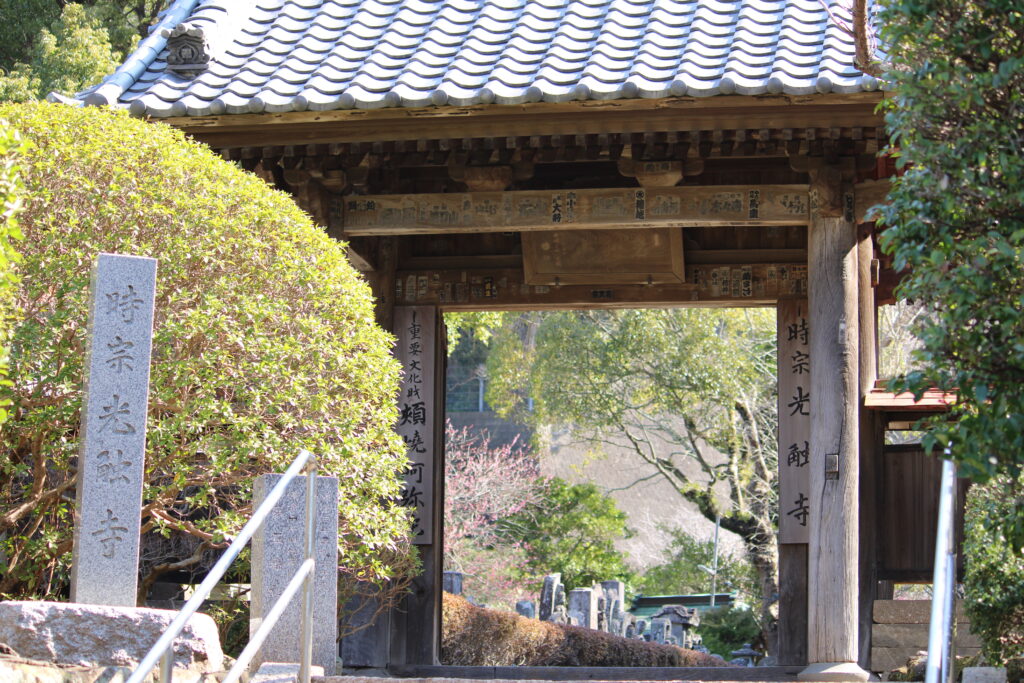
Kōshokuji Temple, founded by Ippen in 1278 during the Kōan era, is a temple of the Jishū sect.
It is located to the east of Kamakura Station, about 3 kilometers away. It takes roughly 50 minutes to walk there, and even for someone like me who is used to walking, the round-trip walk was quite tough…
The main deity is the Amida Triad, and the central figure, the Amida Nyorai statue, is famously known as the “Ho-yaki Amida” (Burnt-cheek Amida). Additionally, be sure to pay attention to the “Shio-name Jizo” (Salt-tasting Jizo) in front of the main hall. Each of these features has its own legend, making it fascinating to stroll through the temple grounds while contemplating the ancient world.
About the person Ippen
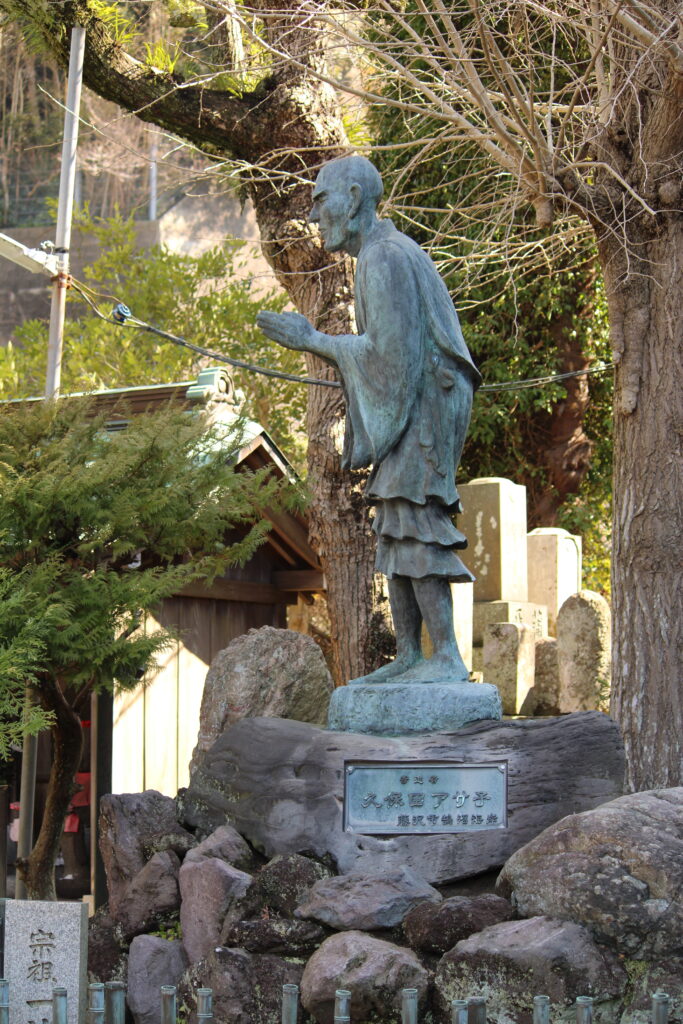
The founder of the Jishū sect, Ippen, was born into the Kōno family, a samurai clan from Iyo (modern-day Ehime Prefecture). He studied under the monk Kadai at Seiryū-ji Temple in Hizen (present-day Saga Prefecture) and dedicated 12 years to studying Pure Land Buddhism. After a series of twists and turns in his life, he visited Shitennōji Temple in Osaka, where he changed his name to “Ippen” and began distributing “fusan” (small wooden prayer slips) to save people.
While distributing these prayer slips, it is said that Ippen received a divine revelation while in retreat at Kumano Hongū Shrine, which conveyed the following message:
“It is not by your encouragement that people are able to attain rebirth. It is through the power of Amida Buddha that they are able to attain rebirth. Therefore, regardless of whether people believe or not, and whether they are pure or impure, continue to distribute the prayer slips.”
This message highlights an important point in understanding Ippen: he distributed the prayer slips to all, regardless of belief or purity. Additionally, Ippen is known for initiating the “dancing nenbutsu” (chanting while dancing) and continued his wandering pilgrimages for about 16 years before passing away at the age of 51.
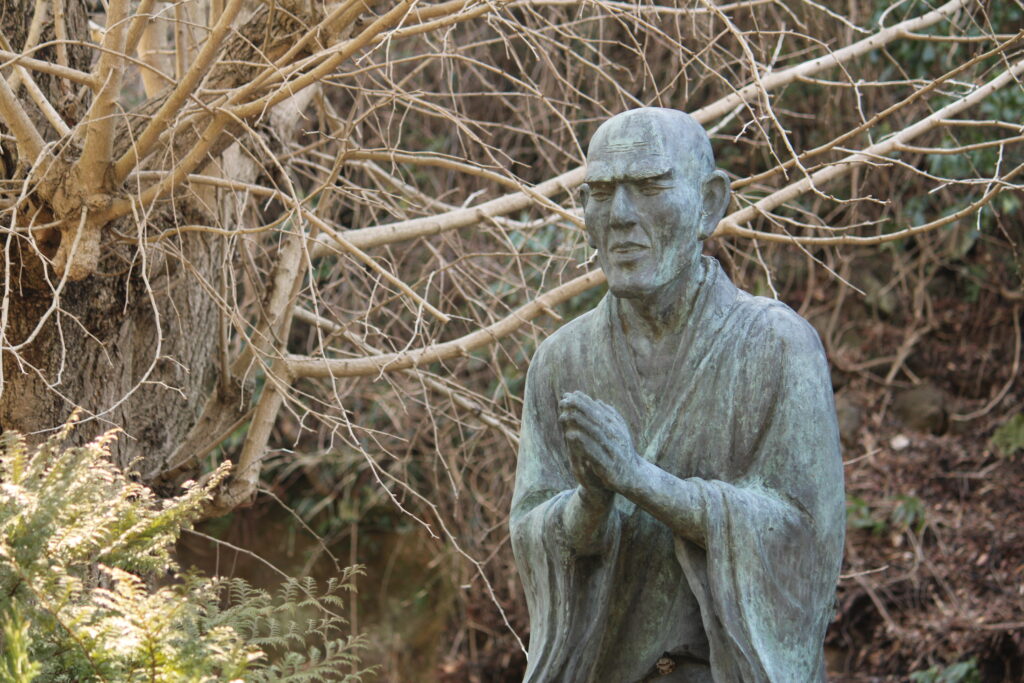

Exploring the temple grounds
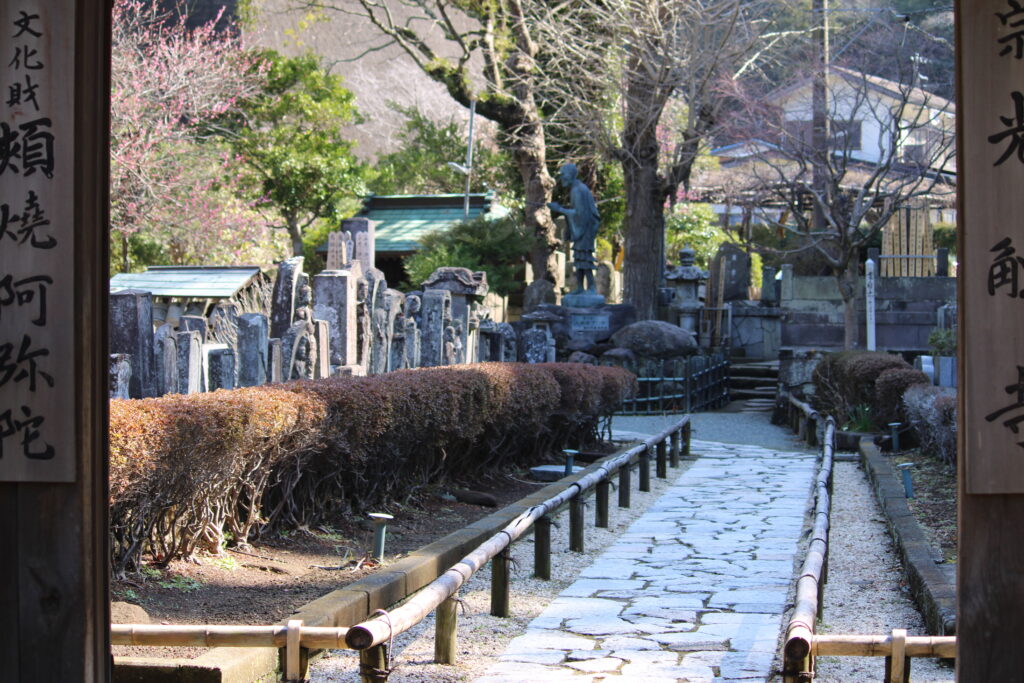
When you peek into the temple grounds, you will see a statue of Ippen at the front. Overall, the temple grounds are rather small.
If you walk straight ahead, you will see the main hall (hondō) on your left. Inside the hall, the Amida Nyorai Triad, the main deities of the temple, is enshrined. The central figure of Amida Buddha is said to have been sculpted by the genius Buddhist sculptor Unkei and is famously known as the “Ho-yaki Amida” (Burnt-cheek Amida).
Additionally, there is a legend recorded in the emakimono (painted handscroll) “Ho-yaki Amida Engi,” which tells the origin story of the Amida Nyorai. Here is a quote from Kōshokuji Temple’s website:
“A wealthy woman from the town, known as ‘Machino-tsubone,’ commissioned Unkei to make a statue of Amida Nyorai, which she enshrined in her private hall and worshiped daily. One day, a monk named Manzō Hōshi was branded by Machino-tsubone in a dispute over a lost person, but the burn mark ended up on the statue of Amida Nyorai, not on Manzō. Feeling the miraculous power of Amida, who had taken the burn on behalf of Manzō, Machino-tsubone built Iwakura-ji Temple and enshrined the Amida Buddha there. From then on, all those connected to the main hall were able to achieve rebirth.”
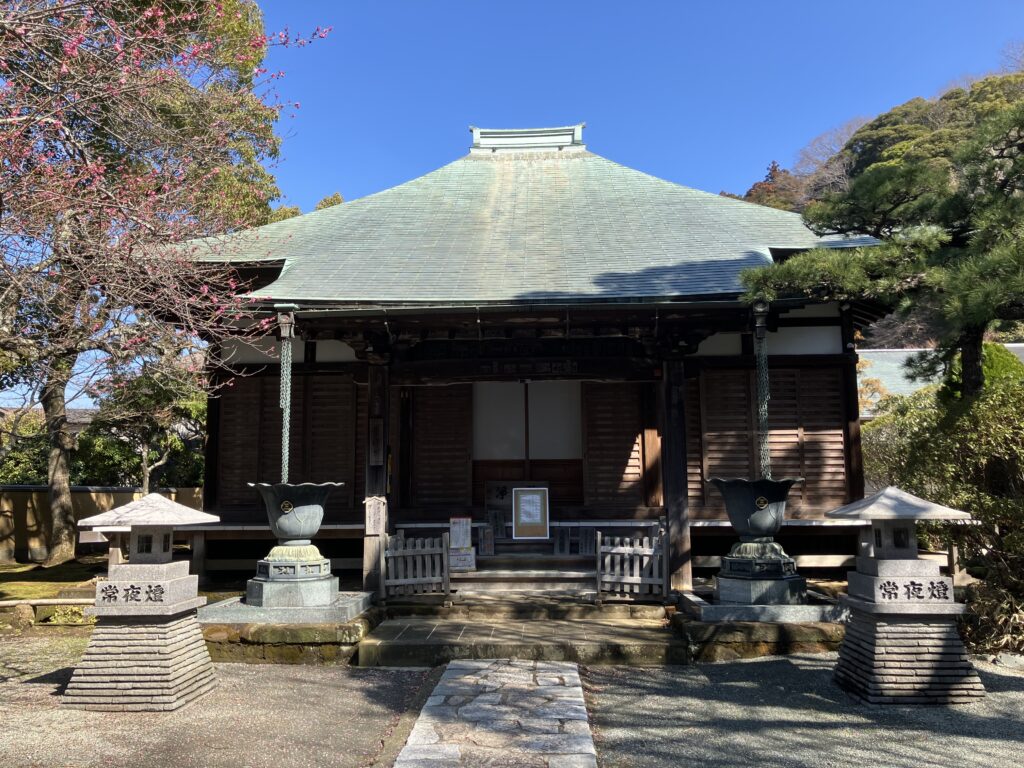
It’s quite an interesting legend, isn’t it? A couple of years ago, I went swimming with my child and got an awful sunburn, which left spots on my skin. I really wish there were a Buddha statue that could take the burn on my behalf, just like in the legend…
Now, there’s also the Jizo known as “Shio-name Jizo” (Salt-tasting Jizo), which has its own legend.
Long ago, a salt seller from Rokuura, who would cross Asahina Pass to come to Kamakura, always offered salt to the Jizo statue. However, every time he returned, the salt was mysteriously gone, leading to the legend that “the Jizo must have tasted it.” This is how the Jizo became known as the famous “Shio-name Jizo,” the Jizo who tastes salt.
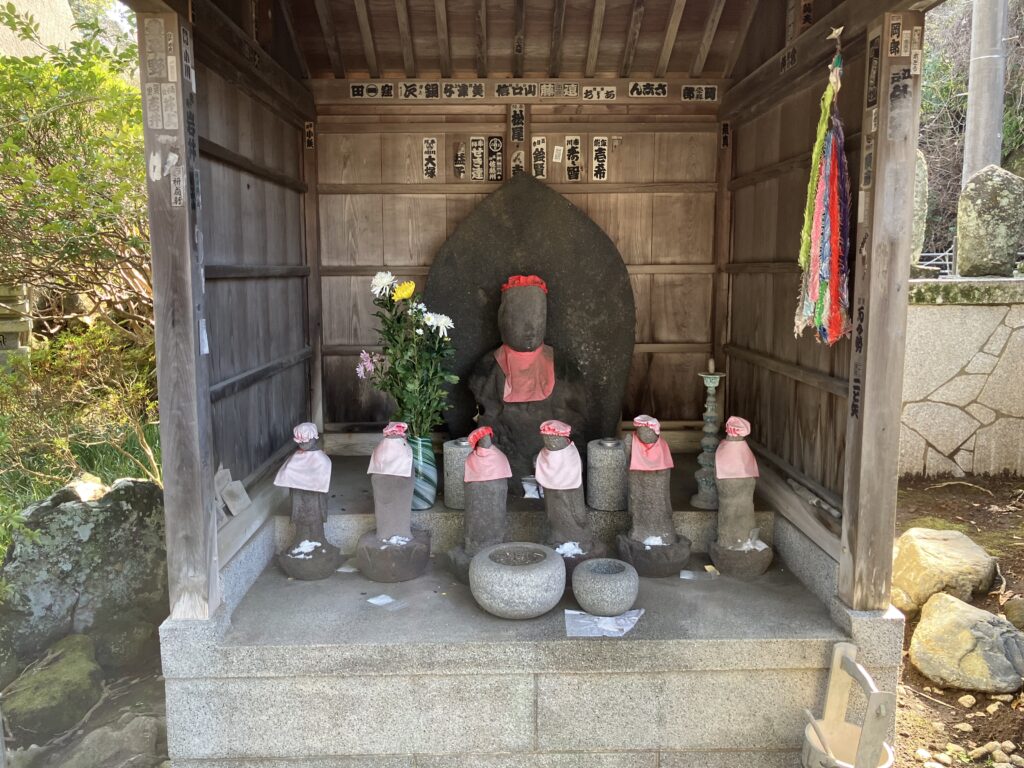
After hearing this legend, what I thought was, “Wasn’t the salt just stolen?!” In reality, we can’t be sure, but I feel it’s important to respect the legend as it is.
Also, early March is the season when plum blossoms bloom, and at this temple, there are a few plum trees that were beautifully in bloom. Both the white and pink flowers were quite lovely♪
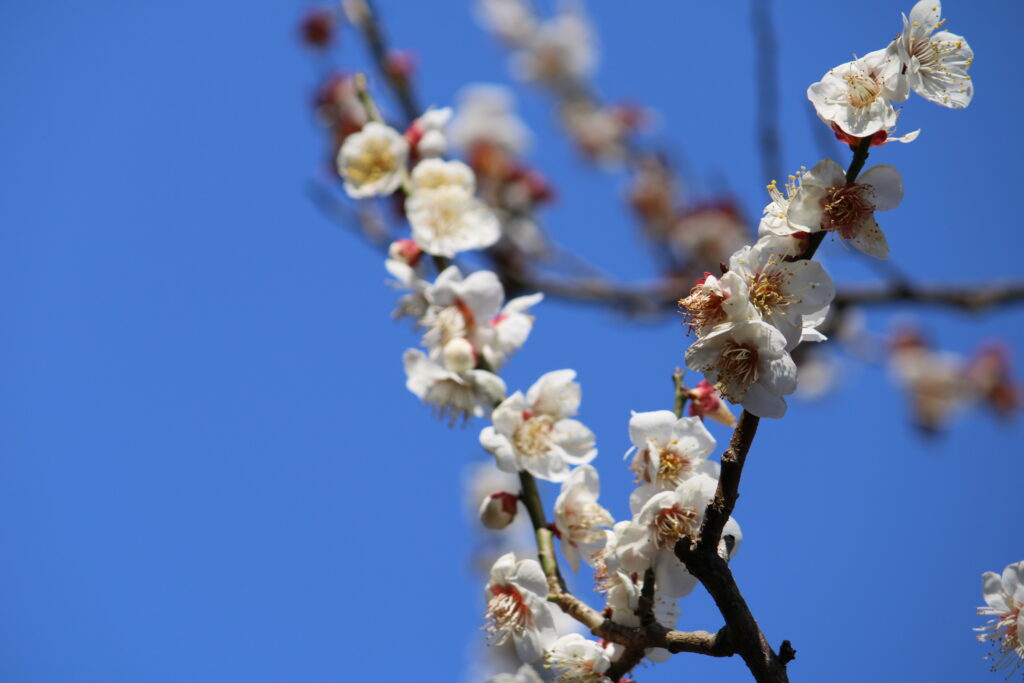
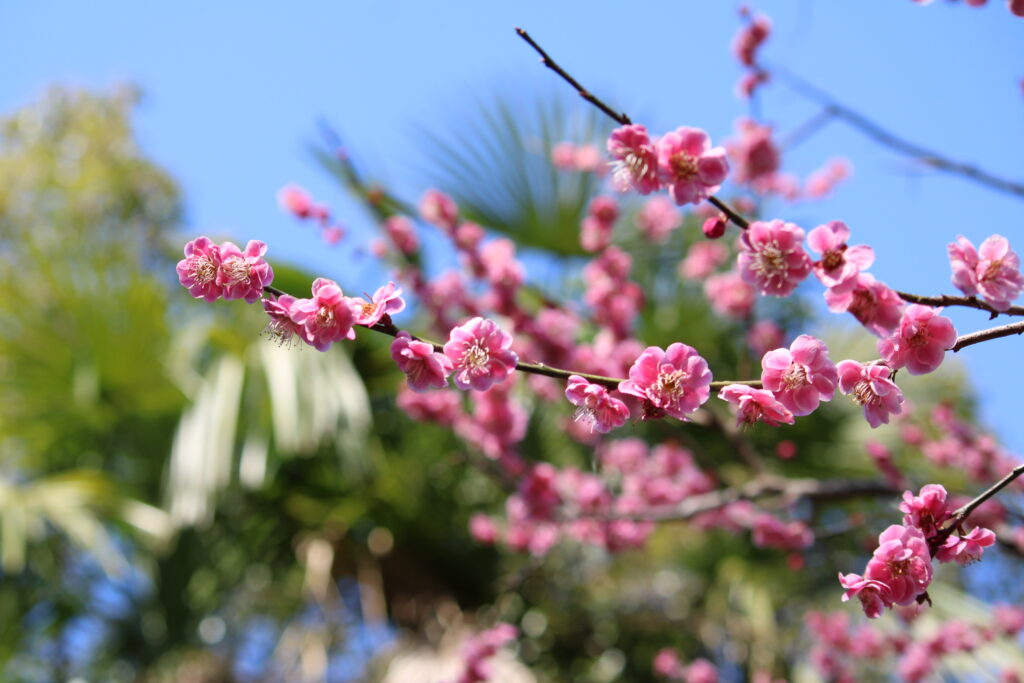
Conclusion
How do you find it!?
I’m sure many people visit Kamakura for sightseeing, but I think not many make the effort to visit Kōshokuji Temple.
However, for those who are interested in learning about history, especially figures like Ippen or Unkei, I highly recommend a visit. I think it would be a great idea to follow the course I initially recommended, visiting Jōmyōji and Sugimoto-dera along the way, and then return to the station while enjoying the atmosphere of Kamakura.
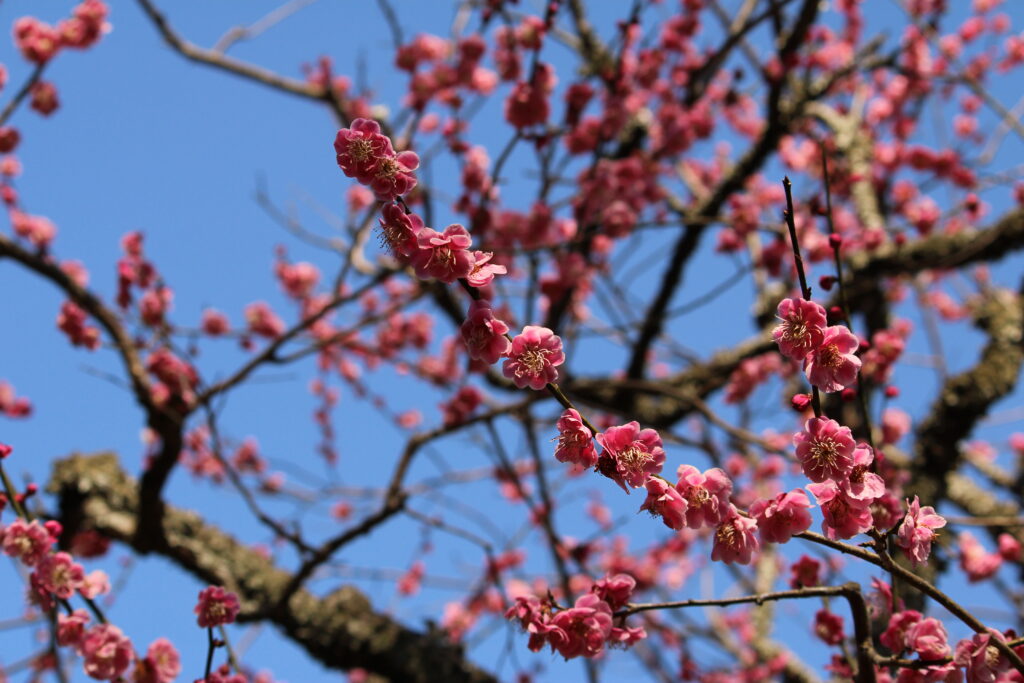
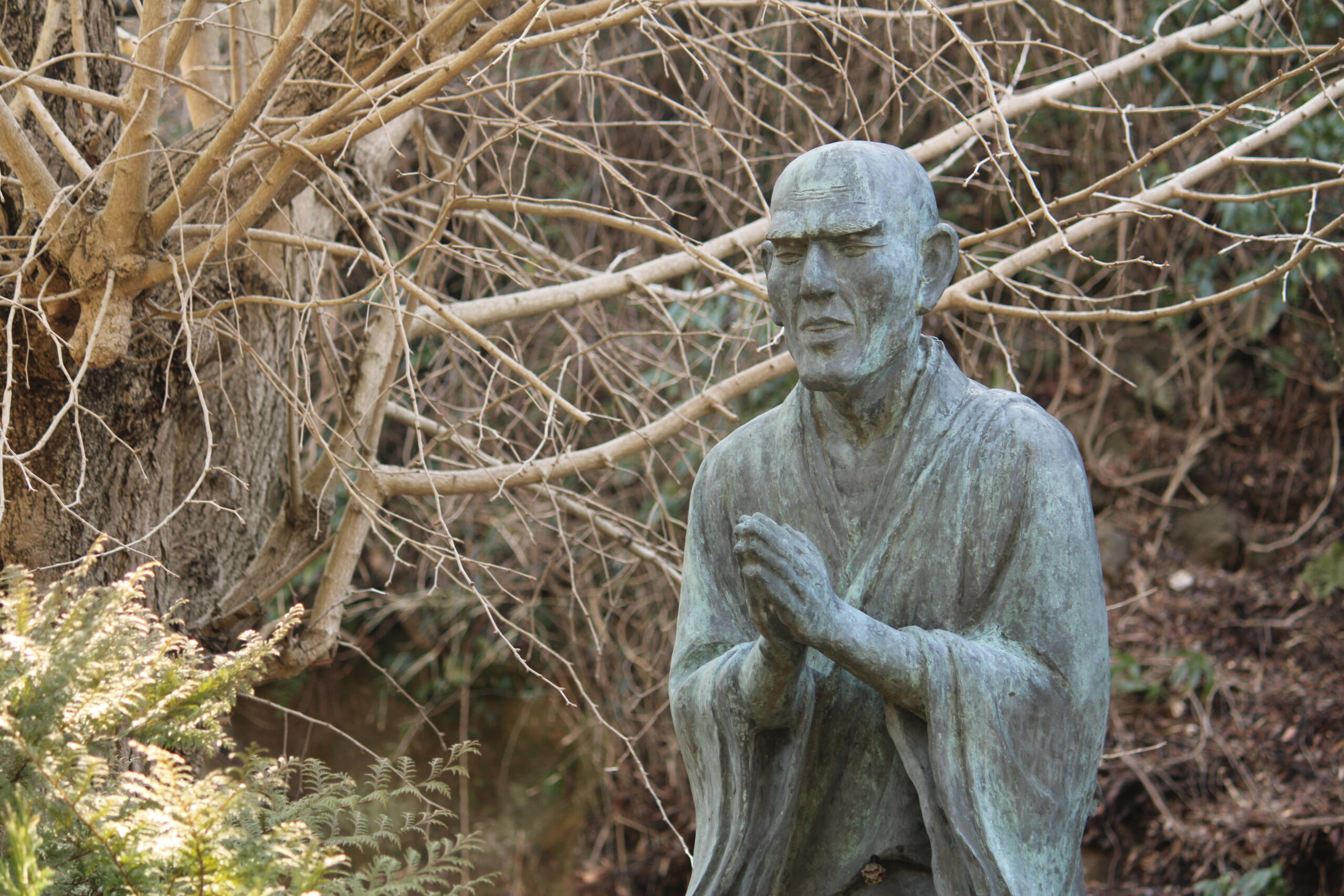


コメント